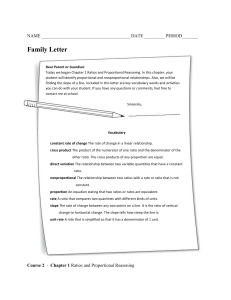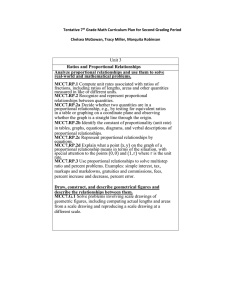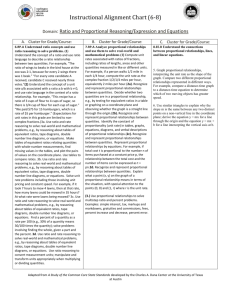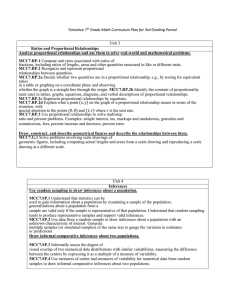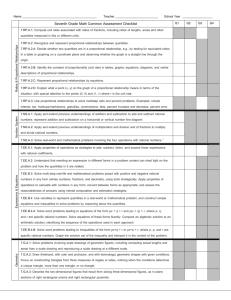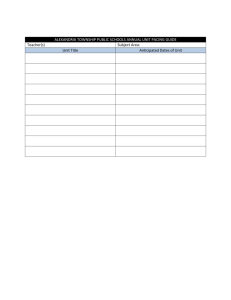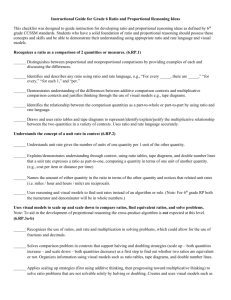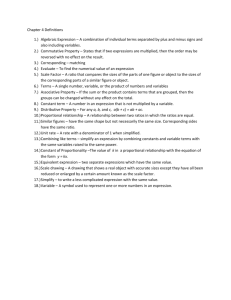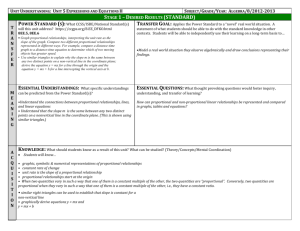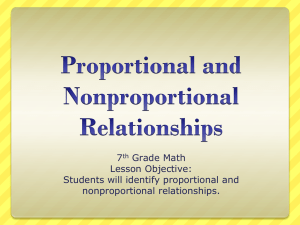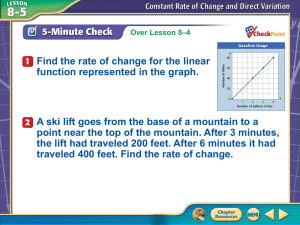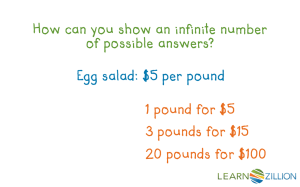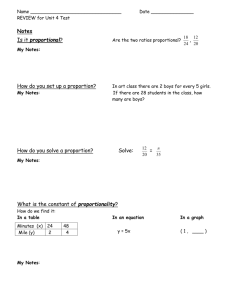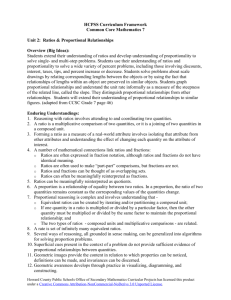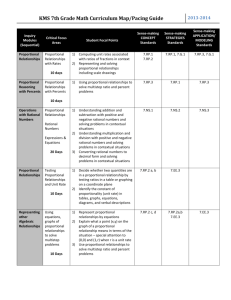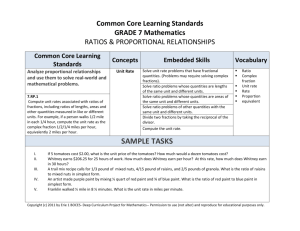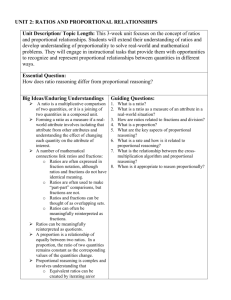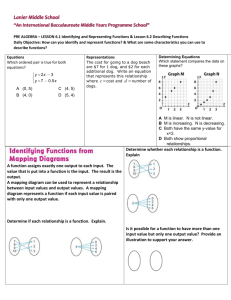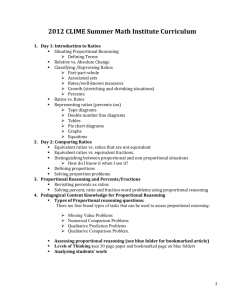Ratio and Proportional Reasoning Comparison (doc)
advertisement
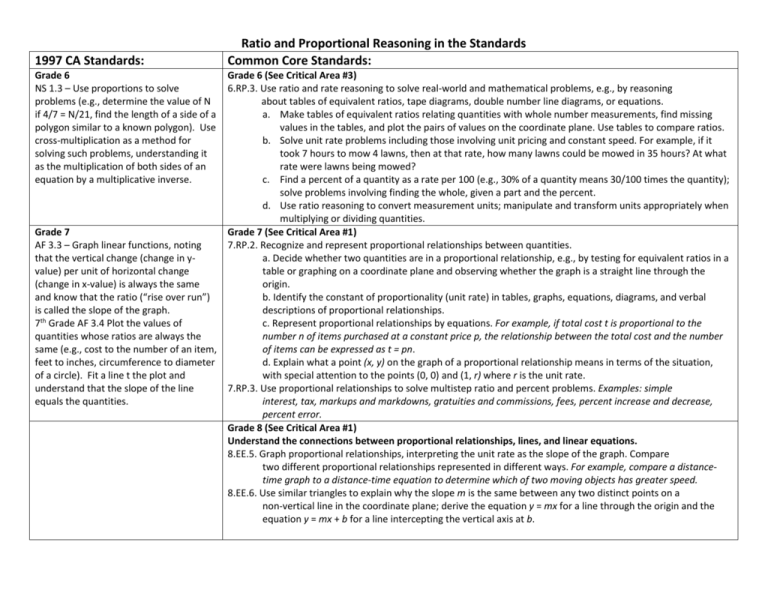
1997 CA Standards: Grade 6 NS 1.3 – Use proportions to solve problems (e.g., determine the value of N if 4/7 = N/21, find the length of a side of a polygon similar to a known polygon). Use cross-multiplication as a method for solving such problems, understanding it as the multiplication of both sides of an equation by a multiplicative inverse. Grade 7 AF 3.3 – Graph linear functions, noting that the vertical change (change in yvalue) per unit of horizontal change (change in x-value) is always the same and know that the ratio (“rise over run”) is called the slope of the graph. 7th Grade AF 3.4 Plot the values of quantities whose ratios are always the same (e.g., cost to the number of an item, feet to inches, circumference to diameter of a circle). Fit a line t the plot and understand that the slope of the line equals the quantities. Ratio and Proportional Reasoning in the Standards Common Core Standards: Grade 6 (See Critical Area #3) 6.RP.3. Use ratio and rate reasoning to solve real-world and mathematical problems, e.g., by reasoning about tables of equivalent ratios, tape diagrams, double number line diagrams, or equations. a. Make tables of equivalent ratios relating quantities with whole number measurements, find missing values in the tables, and plot the pairs of values on the coordinate plane. Use tables to compare ratios. b. Solve unit rate problems including those involving unit pricing and constant speed. For example, if it took 7 hours to mow 4 lawns, then at that rate, how many lawns could be mowed in 35 hours? At what rate were lawns being mowed? c. Find a percent of a quantity as a rate per 100 (e.g., 30% of a quantity means 30/100 times the quantity); solve problems involving finding the whole, given a part and the percent. d. Use ratio reasoning to convert measurement units; manipulate and transform units appropriately when multiplying or dividing quantities. Grade 7 (See Critical Area #1) 7.RP.2. Recognize and represent proportional relationships between quantities. a. Decide whether two quantities are in a proportional relationship, e.g., by testing for equivalent ratios in a table or graphing on a coordinate plane and observing whether the graph is a straight line through the origin. b. Identify the constant of proportionality (unit rate) in tables, graphs, equations, diagrams, and verbal descriptions of proportional relationships. c. Represent proportional relationships by equations. For example, if total cost t is proportional to the number n of items purchased at a constant price p, the relationship between the total cost and the number of items can be expressed as t = pn. d. Explain what a point (x, y) on the graph of a proportional relationship means in terms of the situation, with special attention to the points (0, 0) and (1, r) where r is the unit rate. 7.RP.3. Use proportional relationships to solve multistep ratio and percent problems. Examples: simple interest, tax, markups and markdowns, gratuities and commissions, fees, percent increase and decrease, percent error. Grade 8 (See Critical Area #1) Understand the connections between proportional relationships, lines, and linear equations. 8.EE.5. Graph proportional relationships, interpreting the unit rate as the slope of the graph. Compare two different proportional relationships represented in different ways. For example, compare a distancetime graph to a distance-time equation to determine which of two moving objects has greater speed. 8.EE.6. Use similar triangles to explain why the slope m is the same between any two distinct points on a non-vertical line in the coordinate plane; derive the equation y = mx for a line through the origin and the equation y = mx + b for a line intercepting the vertical axis at b.
